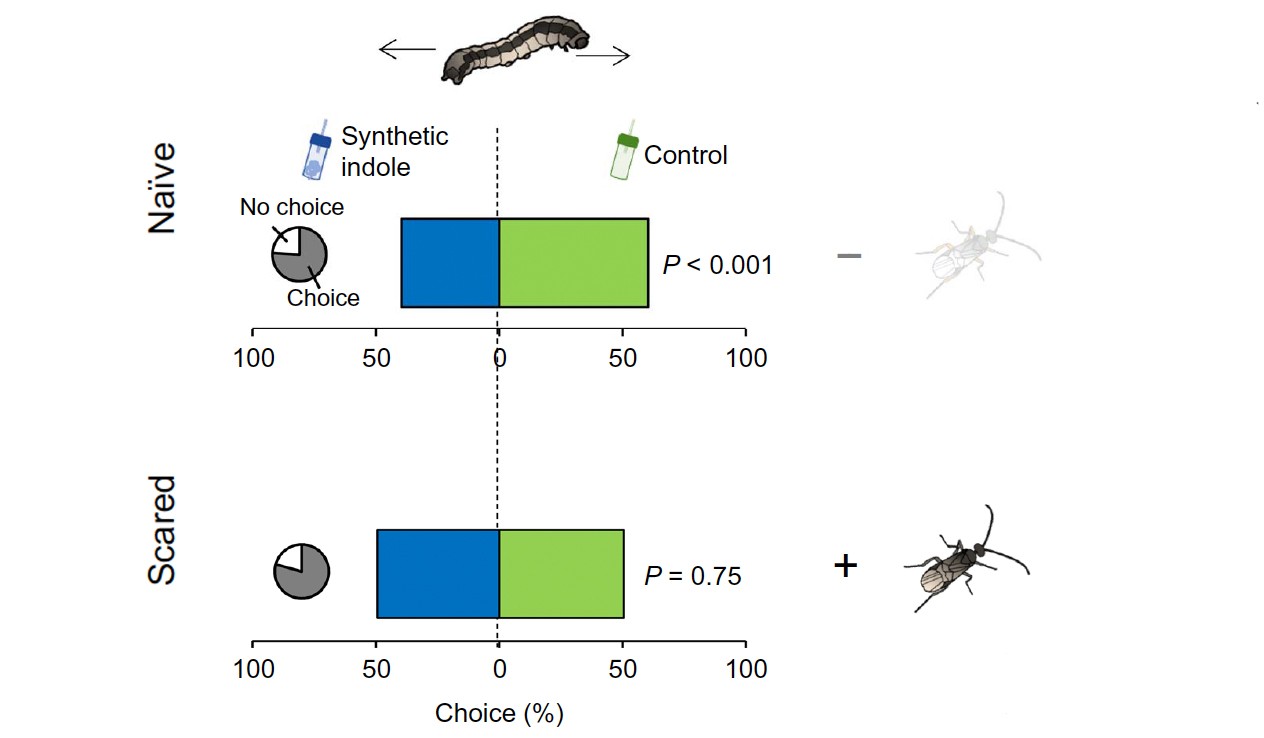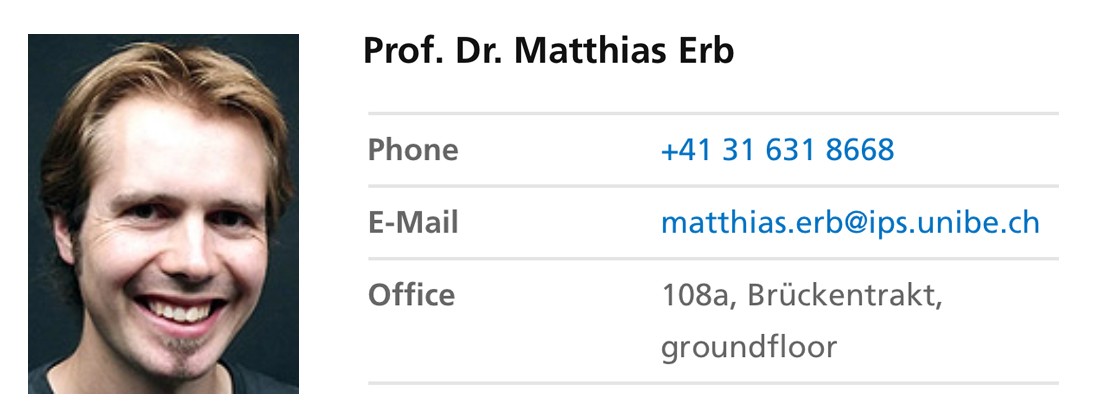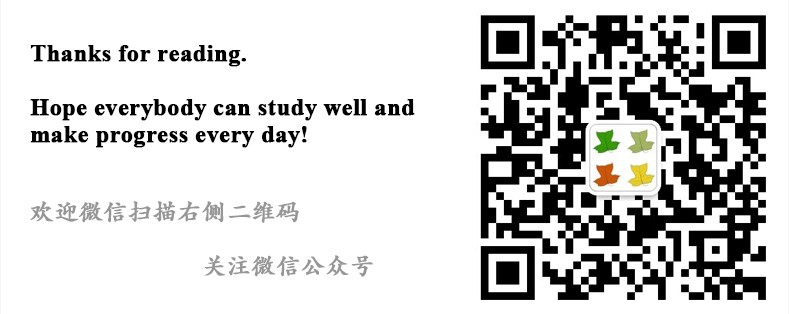博文
Science Advances:植物-草食动物-拟寄生物三者相互作用机制
||
An herbivore-induced plant volatile reduces parasitoid attraction by changing the smell of caterpillars
First author: Meng Ye; Affiliations: University of Bern (伯尔尼大学): Bern, Switzerland
Corresponding author: Matthias Erb
Herbivore-induced plant volatiles (HIPVs; 食草动物诱导的植物挥发物) can mediate tritrophic interactions by attracting natural enemies of insect herbivores such as predators (食肉动物) and parasitoids (拟寄生物). Whether HIPVs can also mediate tritrophic interactions by influencing the attractiveness of the herbivores themselves remains unknown. We explored this question by studying the role of indole (吲哚), a common HIPV in the plant kingdom. We found that herbivory-induced indole increases the recruitment of the solitary endoparasitoid Microplitis rufiventris (红腹侧沟茧蜂) to maize plants that are induced by Spodoptera littoralis caterpillars (棉叶夜蛾毛虫). Surprisingly, however, indole reduces parasitoid recruitment when the caterpillars themselves are present on the plants. Further experiments revealed that indole exposure renders S. littoralis caterpillars unattractive to M. rufiventris, leading to an overall reduction in attractiveness of plant-herbivore complexes. Furthermore, indole increases S. littoralis resistance and decreases M. rufiventris parasitization success. S. littoralis caterpillars are repelled (排斥) by indole in the absence of M. rufiventris but specifically stop avoiding the volatile in the presence of the parasitoid. Our study shows how an HIPV can undermine tritrophic interactions by reducing the suitability and attractiveness of caterpillars to parasitoids.
食草动物诱导的植物挥发物HIPV可以通过吸引食草昆虫的自然天敌,如食肉动物和拟寄生物来介导三者之间相互作用关系。然而HIPV能否通过影响食草动物本身的吸引能力来介导这种“植物-草食动物-肉食动物”三者之间的相互关系还不清楚。本文通过植物中最普遍的HIPV吲哚来研究这个问题。作者发现草食动物诱导的吲哚会增加玉米植株招募内寄生虫红腹侧沟茧蜂,而这是由棉叶夜蛾毛虫所诱导的。有趣的是,当毛虫存在于植株上时,吲哚会减少拟寄生物的招募。进一步的试验显示吲哚处理会使得棉叶夜蛾毛虫不再吸引红腹侧沟茧蜂,进而导致了植物-草食动物复合体的整体吸引度下降。此外,吲哚会增加棉叶夜蛾抗性,而降低红腹侧沟茧蜂的寄生成功率。在红腹侧沟茧蜂不存在时,棉叶夜蛾毛虫受到吲哚的排斥,但在存在拟寄生物时会特异的停止避开吲哚。本文的研究揭示了HIPV是如何通过降低毛虫对于拟寄生物的吸引度来决定植物-草食动物-肉食动物/拟寄生物之间的三重相互作用的。
通讯:Matthias Erb (http://www.ips.unibe.ch/aboutus/personen/interactions/prof_dr_erb_matthias/index_eng.html)
doi: 10.1126/sciadv.aar4767
Journal: Science Advances
Published date: 16 May, 2018
(P.S. 原文下载:链接:https://pan.baidu.com/s/1qFiSsqwlF_7JjmGMbedfhQ 密码:dmu6)
https://blog.sciencenet.cn/blog-3158122-1114883.html
上一篇:PNAS:植物氮信号转导的时间序列转录组分析
下一篇:J EXP BOT:洋葱内层和外层热处理下的比较转录组分析
全部作者的其他最新博文
- • Plant Physiology:CsMADS3促进柑果中的叶绿素降解和类胡萝卜素合成(华中农业大学)
- • Molecular Plant:LBD11-ROS反馈调节作用于拟南芥的维管形成层增殖和次生生长(浦项科技大学)
- • Science Advances:根结线虫通过调控植物的CLE3-CLV1模块,促进侵染进程(日本熊本大学)
- • Nature Communications:油菜素内酯参与植物营养生长期转变的分子机制解析(浙江农林大学)
- • Current Biology:光合作用产生的蔗糖驱动侧根“生物钟”(德国弗莱堡大学)
- • PNAS:花同源异型基因在叶中被抑制、花中被激活的分子机制(南卡罗来纳大学)


